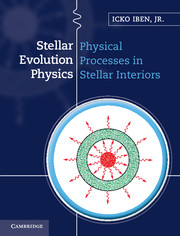Book contents
- Frontmatter
- Contents
- Preface
- Part I Introduction and overview
- Part II Basic physical processes in stellar interiors
- 3 Properties of and physical processes in main sequence stars–order of magnitude estimates
- 4 Statistical mechanics, thermodynamics, and equations of state
- 5 Polytropes and single zone models
- 6 Hydrogen-burning reactions and energy-generation rates
- 7 Photon–matter interaction probabilities, absorption cross sections, and opacity
- 8 Equations of stellar evolution and methods of solution
- Part III Pre-main sequence, main sequence, and shell hydrogen-burning evolution of single stars
- Index
- References
5 - Polytropes and single zone models
from Part II - Basic physical processes in stellar interiors
Published online by Cambridge University Press: 05 December 2012
- Frontmatter
- Contents
- Preface
- Part I Introduction and overview
- Part II Basic physical processes in stellar interiors
- 3 Properties of and physical processes in main sequence stars–order of magnitude estimates
- 4 Statistical mechanics, thermodynamics, and equations of state
- 5 Polytropes and single zone models
- 6 Hydrogen-burning reactions and energy-generation rates
- 7 Photon–matter interaction probabilities, absorption cross sections, and opacity
- 8 Equations of stellar evolution and methods of solution
- Part III Pre-main sequence, main sequence, and shell hydrogen-burning evolution of single stars
- Index
- References
Summary
Polytropes are simple but pedagogically very useful models of self gravitating spheres. They were invented and explored in the last quarter of the nineteenth century, long before the development of theories for describing energy generation and energy flow in the stellar interior. The models follow when an exact balance between an outward pressure gradient force and the inward gravitational force is assumed and a parameterized power-law relationship between pressure and density is adopted. Solutions require no explicit use of a temperature-dependent equation of state, a law of energy transport, or a law of energy generation. The only equations to be solved are Poisson's equation for the gravitational field and the pressure balance equation. By varying the parameters in the power law, one can obtain plausible zeroth order models of various classes of real stars. A discussion of the contributions to the subject by Lane, Ritter, Emden, Kelvin, and others is given at the end of Chapter IV of Subrahmanyan Chandrasekhar's book Stellar Structure (1939). It is revealing that the construction of complete polytropes did not begin until 1878, five years after Cornu & Baile in 1873 determined explicitly for the first time the value of the gravitational constant G from results of Cavendish's 1798 tortional balance experiments. Arthur S. Eddington, who pioneered the development of the theory of radiative energy transport in stellar interiors, made imaginative use of polytropes and argued that one particular polytrope, that of index N = 3, provides an approximate description of the observed properties of main sequence stars.
- Type
- Chapter
- Information
- Stellar Evolution Physics , pp. 191 - 257Publisher: Cambridge University PressPrint publication year: 2012



